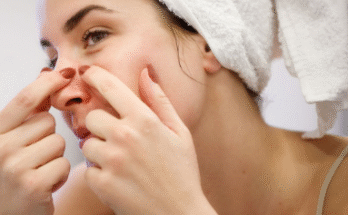Retinol has become one of the most talked-about ingredients in skincare, especially when it comes to treating acne and improving overall skin texture. Despite its popularity, there is still some confusion about what it actually does, how it works, and whether it is right for everyone.
Understanding the science behind retinol and how to use it correctly can make all the difference in achieving clear, healthy-looking skin.
Retinol is a derivative of vitamin A, an essential nutrient that plays a key role in cell turnover and skin renewal. When applied topically, retinol helps accelerate the shedding of dead skin cells, encouraging new ones to form more quickly.
This process is particularly beneficial for people dealing with acne, as clogged pores often occur when dead cells and oil build up on the skin’s surface. By promoting faster cell renewal, retinol helps keep pores clear and reduces the likelihood of new breakouts.
Another way retinol helps with acne is by regulating oil production. Excess sebum, or skin oil, can mix with debris and bacteria, creating the perfect environment for pimples to form. Retinol helps balance the skin’s oil levels over time, leading to fewer clogged pores and a smoother appearance. It also has anti-inflammatory properties, which can calm the redness and swelling often associated with acne. With consistent use, many people notice fewer blemishes, less irritation, and an overall more even skin tone.
In addition to managing acne, retinol offers several long-term skin benefits. It stimulates collagen production, a natural protein that keeps skin firm and resilient. As collagen levels increase, fine lines and acne scars can appear less visible, resulting in smoother and more refined skin. This makes retinol not only an acne-fighting ingredient but also an effective tool for maintaining a youthful complexion.
However, while retinol can be incredibly effective, it is important to use it properly to avoid irritation. Beginners are often advised to start with a low concentration and apply it just two or three times a week. Over time, as the skin builds tolerance, the frequency and strength can be increased gradually. Moisturizing well and using sunscreen during the day are essential steps, as retinol can make the skin more sensitive to sunlight. Skipping sunscreen can lead to dryness or sun damage, which may undo much of the progress retinol provides.
Consistency is key when using retinol for acne. Results do not appear overnight, and patience is required. Most people begin to see visible improvements after eight to twelve weeks of regular use. During this time, some mild dryness, flaking, or purging—a temporary increase in breakouts—may occur. This stage can be discouraging, but it is often a normal part of the adjustment process. Once the skin adapts, the complexion tends to become clearer and more radiant.
It is also wise to combine retinol with a gentle skincare routine. Harsh exfoliants, alcohol-based toners, or strong acne treatments can cause unnecessary irritation when used alongside retinol. A mild cleanser, soothing moisturizer, and daily sunscreen are the best companions for a retinol-based regimen. Consulting a dermatologist before starting any new active ingredient is always a good idea, especially for those with sensitive skin or ongoing skin conditions.
In summary, retinol is a powerful and versatile ingredient that helps target acne at its source while offering additional benefits like smoother texture, reduced oiliness, and improved skin tone. When introduced carefully and used consistently, it can transform the complexion and restore confidence. For anyone struggling with breakouts or looking to enhance their skin’s appearance, retinol offers a proven path toward clearer, healthier skin.


